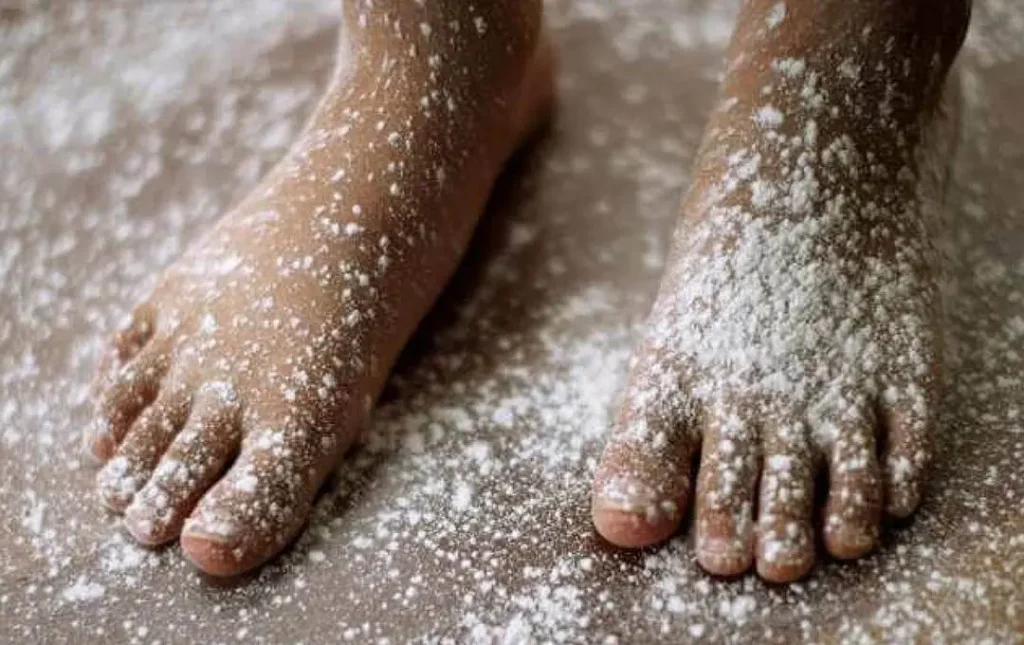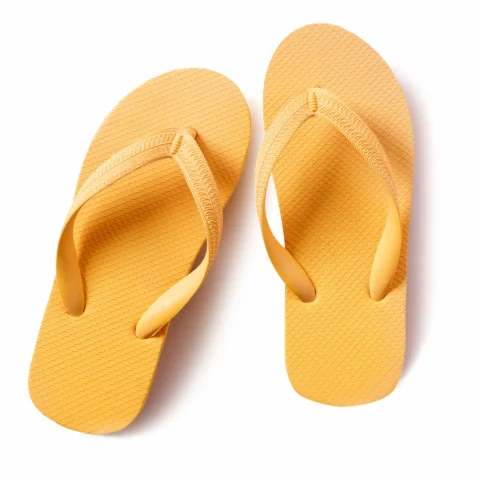
EUP
- To treat athlete’s foot at home, you can apply tea tree oil or soak your feet in a tea bath.
- To prevent the recurrence or spreading of athlete’s foot, you should try sprinkling your feet with cornstarch and disinfecting your shoes.
- If your athlete’s foot symptoms do not improve within a few days of using natural home remedies, reach out to a podiatrist or primary care provider.
- This article was medically reviewed by Jason R. McKnight, MD, MS, a family medicine physician and clinical assistant professor at Texas A&M College of Medicine.
- Visit Insider’s Health Reference library for more advice.
Athlete’s foot is a type of fungal infection that can cause painful symptoms like itching, redness, peeling of the skin, and even blistering. It often affects the skin between the toes, but it can occur on other areas of the foot as well, like the sole.
Athlete’s foot is most effectively treated with a prescription topical cream or with over-the-counter treatments. However, you can also try clearing the infection at home if it’s mild.
Here are five natural home remedies that can treat athlete’s foot.
Because tea tree oil has antifungal properties, it may help treat athlete’s foot.
Tea tree oil is an essential oil that comes from the leaves of the Australian tea tree. A 2002 study compared two different concentrations of tea tree oil and a placebo in treating patients with athlete’s foot. They applied the solutions for four weeks, and the study found that about 70% of the people in both tea tree oil groups saw an improvement in symptoms, compared to 39% in the placebo group.
According to Jason Galante, DPM, a double-board certified foot and ankle surgeon in New Jersey, you can use tea tree oil to treat athlete’s foot by following these steps:
- Shower and thoroughly dry your feet.
- Apply the oil directly on your skin and nails.
- Repeat this process once or twice a day until the infection has cleared.
Products that contain tea tree oil, like foot soaks and soap, may also help clear the infection. These can be purchased at a drugstore or natural food store.
Soaking your feet in tea may also ease symptoms of athlete’s foot.
Contact us now to discuss your foot and ankle health needs.
A small 2013 clinical trial found that 12 weeks of foot baths containing green tea polyphenols — micronutrients found in plant-based foods — improved symptoms of athlete’s foot in elderly patients compared to a placebo.
Black tea may also alleviate symptoms of athlete’s foot, particularly the odor, due to the presence of a specific type of polyphenol called tannins.
Gallery: If Your Face Mask Has One of These, Stop Using It Immediately (Best Life)
“The tannins that are in black tea help with that foot odor,” says Galante.
Cornstarch, a common kitchen ingredient made from corn, can also treat athlete’s foot by absorbing excess moisture from feet, says Galante. That’s because keeping your feet dry prevents the spread of this fungal infection.
If you don’t have cornstarch, you can try drugstore foot powders like Dr. Scholl’s, which can be helpful as well, says Jon Sherman, DPM, a board-certified foot surgeon and fellow at the American College of Foot and Ankle Surgeons.
Because athlete’s foot is so contagious, it’s important to disinfect items that may be harboring fungi, Sherman says. To prevent reinfection, it’s always a good idea to disinfect your shoes.
One way to disinfect your footwear is with an ultraviolet-C (UVC) light, some of which can kill viruses, germs, and fungi in 15 minutes, says Sherman. These can be purchased at home stores or podiatrists’ offices.
Another option is spraying your shoes with a disinfectant spray, like Lysol. This can be done once a week for a month and then once a month after that, Galante says. “You want to reduce any kind of pathogens or fungal spores that could live inside your shoe.”
“Proper hygiene is important because fungi will thrive in a warm, damp environment,” Galante says. Tips to prevent the spread or recurrence of athlete’s foot include:
- Wear sandals when possible to keep your feet dry
- Alternate shoes every two to three days
- Avoid socks made from fabrics that don’t dry easily, like nylon
- Choose moisture-wicking fabrics for your socks, like wool
- Wash and dry in between your toes when you shower
- Keep your socks clean and dry and change them if you have sweaty feet
If you’ve tried the above home remedies for a few days and your symptoms continue to worsen, it’s time to see a doctor, Galante says. That’s because the infection could become chronic or spread to other areas of the foot.
“Once [athlete’s foot] becomes a chronic issue in the skin, not only is it harder to treat, but that’s how most of our toenail fungal infections happen,” Galante says. Toenail infections are more difficult to treat, he says.
The American Podiatric Medical Association recommends visiting a podiatrist or primary care provider if the infection doesn’t improve after two weeks of proper foot hygiene.
Additionally, if you have itching, redness, blistering, oozing, or odor, see a doctor, Sherman says. “Odor is a pretty good indicator of ‘Hey, something’s not right.’” These symptoms indicate the infection is too serious to be treated at home.
To treat athlete’s foot at home, you can try tea tree oil, tea soaks, or cornstarch. It’s also important to keep your feet, socks, and shoes dry to prevent athlete’s foot from recurring. See a doctor if your symptoms don’t improve within a few weeks to ensure the infection does not become chronic or spread to the toenails.
Our advanced podiatry treatments can help relieve your foot and ankle issues.

